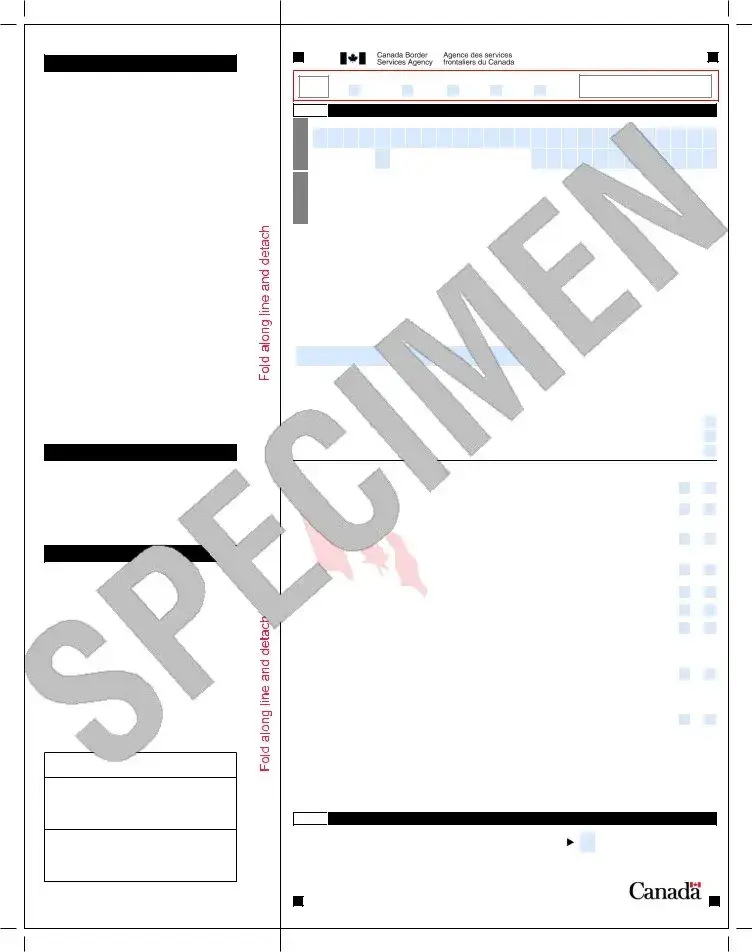What is the Declaration Canada E311 form?
The Declaration Canada E311 form is a card provided by the Canada Border Services Agency (CBSA) that travelers use when entering Canada. It allows individuals to declare any goods they are bringing into the country and includes important information about duty-free allowances and exemptions. Each traveler must complete their own declaration, even if they are traveling together with family or friends.
Who needs to fill out the E311 form?
Every traveler entering Canada must complete a Declaration Card. This includes visitors from other countries as well as residents returning to Canada. If you are traveling with others who live at the same address, you can list up to four people on a single card, but each person is still responsible for declaring their own items.
What happens if I don’t declare my goods properly?
Failure to declare goods accurately can lead to serious consequences. You could face seizure of your items, monetary penalties, or even criminal prosecution. It's very important to be honest and thorough when filling out the form to avoid any issues with customs officials.
Are there duty-free allowances for items I bring into Canada?
Yes, there are specific duty-free allowances that travelers can take advantage of. For example, visitors can bring gifts valued up to CAN$60 each (excluding alcohol and tobacco). Residents returning to Canada have different exemptions based on their time away: after 24 hours, you can bring goods valued up to CAN$200; after 48 hours, up to CAN$800; and after 7 days, also up to CAN$800. Make sure you check the details for alcohol and tobacco limits as well.
What should I do if I have currency or monetary instruments?
If you are bringing CAN$10,000 or more in currency or monetary instruments, you must declare this on your E311 form. This requirement applies to cash, traveler's checks, and other negotiable instruments, and it is crucial to report this accurately to avoid penalties.
What personal information is collected on the E311 form?
The information you provide is collected to ensure compliance with Canadian laws governing imports and exports. This includes your name, citizenship, birth date, and details of the goods you’re bringing. Additionally, this information may be shared with other government departments for enforcement purposes. You have the right to access and correct your personal information under the Privacy Act.
Can I declare unaccompanied goods?
Yes, you can declare unaccompanied goods, but they must be noted on the E311 form. Unaccompanied goods refer to items that arrive separately from you, such as those shipped ahead of time. Ensure you declare these clearly to avoid complications at the border.
Is there a specific age requirement for signing the E311 form?
Any traveler aged 16 years or older must sign the declaration. If you are under 16, a parent or guardian can sign on your behalf. It's important for all adult travelers to certify that their declarations are true and complete, as this carries legal obligations.
How do I complete the form if I'm traveling with family?
If you are traveling with family, fill out the form together. You can list up to four individuals living at the same address on one card. It’s essential to ensure that each person accurately states their declaration while referencing the shared address. Even when traveling together, each person is responsible for their own items and any required declarations.



 All travellers (living at the same address) – Please print in capital letters.
All travellers (living at the same address) – Please print in capital letters.
 Signatures (age 16 and older): I certify that my declaration is true and complete.
Signatures (age 16 and older): I certify that my declaration is true and complete.